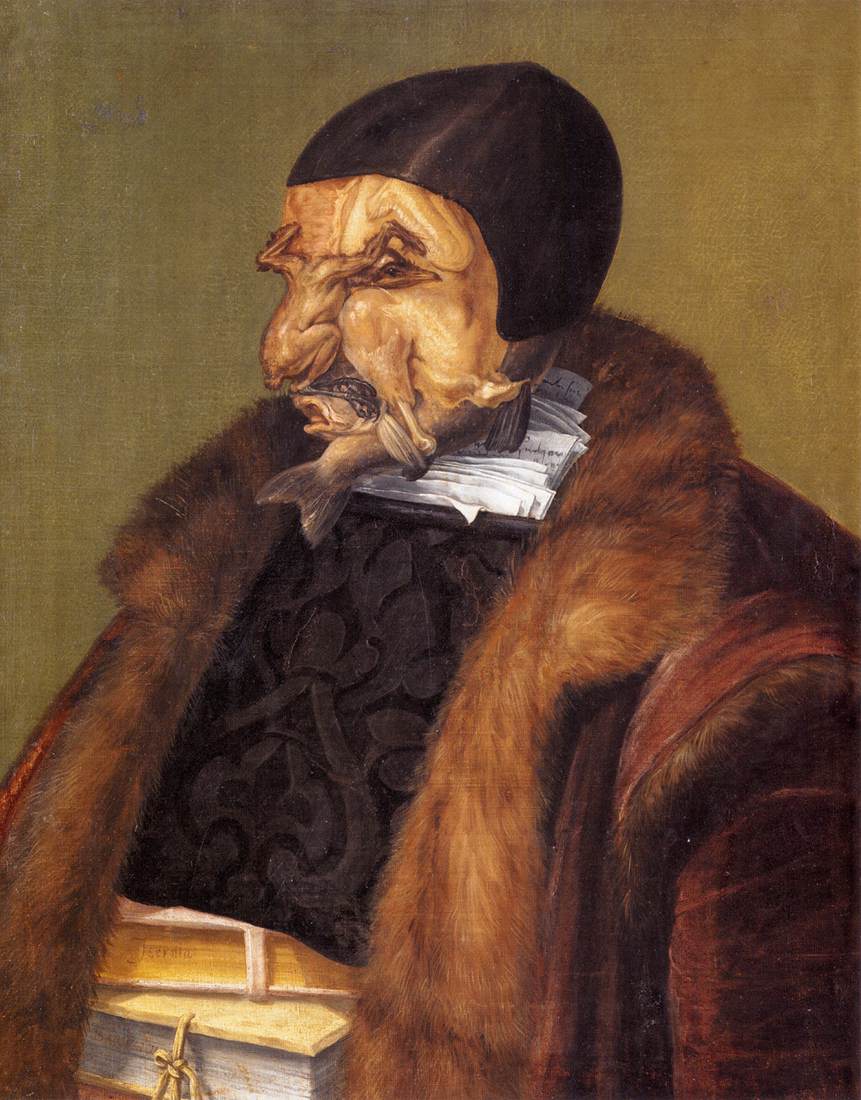Description
The painting "The Jurist" by Italian artist Giuseppe Arcimboldo is a masterpiece that stands out for its unique artistic style and surreal composition. The work, which measures 64 x 51 cm, represents the head of a judge made up of a variety of objects related to law and justice.
Arcimboldo's artistic style, known as "grotesque manner", is characterized by the creation of portraits composed of a variety of objects and elements. In "The Jurist", Arcimboldo uses objects such as books, watches, keys, and a hammer to create the judge's head. The composition of the work is impressive, as the objects are combined in such a way that they form a realistic human head.
The use of color in "The Jurist" is also impressive. Arcimboldo uses a palette of soft, warm colors that contrast with the cold, metallic objects that make up the head of the judge. Light and shadow are also used to create a sense of depth and realism in the work.
The history of "The Jurist" is interesting, as it was painted in the 16th century, during the time of the Italian Renaissance. At that time, justice and the law were important issues in society, and Arcimboldo used his work to represent the importance of these issues.
A little-known aspect of "The Jurist" is that the work was part of a series of court portraits of Emperor Maximilian II of Austria. The series included court portraits made up of objects related to their professions, such as "The Cook" and "The Librarian".
In short, Giuseppe Arcimboldo's "The Jurist" is a masterpiece that stands out for its unique artistic style, its surreal composition, its use of color and its interesting story. It is a work that is still relevant today, as it represents the importance of justice and law in society.

